What are your chances of providing the best customer experience without a rigorous call center strategy? Extremely low.
Call center managers wrestle with this harsh reality today — balancing a future vision with today’s contact center demands.
While there aren’t any stats on how many businesses declined without a set strategy. But let’s face it; you wouldn’t want to publish those, would you?
So, why do some companies wing it without a call center strategy?
- They don’t think their organization needs one.
- They’re too busy tending to day-to-day tasks.
- They’re unaware of the benefits of a contact center strategy.
The importance of documenting call center processes tends to get lost when you don’t assign a tangible benefit to them.
Whether it’s your first time developing a successful call center strategy or your third, it’s easy to get bogged down in documentation and distracted by what’s happening on the front lines.
The good news is that you’ve identified the need for a call center strategy as you read this guide.
Colin Taylor, a customer experience expert at The Taylor Reach Group, suggests most businesses create a call center for these reasons:
“There can be many reasons for an organization to decide it is time to create a call center or contact center. Perhaps organic growth, a new product, service, or acquisition is resulting in calls swamping the switchboard, or customers are tracking down the administrative offices to trace an order, or email volumes are surging and going unanswered?”
Does this resonate?
If so, take a step back from your day-to-day. Let’s focus on planning out your call center operations.
If you like the sound of:
- Less firefighting
- Fewer escalations
- Happier customers
- Predictable call volumes
- Problem-solving
- Less agent turnover
With a dedicated and documented call center strategy, you avoid the strategic misses instead of dealing with them in the moment.
You must factor the following elements into your customer support planning. (We’ll get into them below!)
- The key to call center success
- How to structure your call center
- Call center goals, skills, and objectives
- Deliver training that boosts performance
- Investing in the right call center technology
- 6 ways to complete your call center strategy
What’s the Key to Call Center Success?
Success has different definitions across business units and call center teams within an organization.
Before you make drastic changes, it’s best to take a step back and look at your customer expectations and your support team’s workflows.
What does a successful call center look like? How far away from this are you?
Successful call center managers know the metrics that count. These are the KPIs that tell the story with little explanation. A call center that isn’t measured is a call center that can’t be successful.
By definition, success is the accomplishment of an aim or purpose. So start with the objective of your call center.
Defining your purpose
It’s not just to serve your customers but also to maintain the highest standards for call center employees so they can strengthen customer relationships and keep churn low.
Sometimes, you’ll need to adjust the vision for your contact center. Traditionally, business leaders view it as a cost center, such as classic customer support. But the closer you get to revenue, you’ll earn more budget and spark more creativity.
For inspiration, here are several ways call centers can increase revenue:
- Proactive and reactive customer retention
- Upsells and cross-sells following support interactions
- Win-back former customers
- Capture customer referrals
- Generate positive customer reviews
With these ambitions in mind, what measurements should be in your strategy?
Metrics to include in your call center strategy
Your call center is often the first line of response for almost every customer interaction. So, you should view your call center team as the first step in your customer retention strategy.
While it’s easy to get carried away setting new KPIs and metrics, these must relate to objectives that match those of the company.
Consider including these customer service metrics:
- Average Wait Time
- Abandonment Rate
- First Call Resolution (FCR)
- Service Level Agreement (SLA)
- Average Handle Time (AHT)
- Time to Resolution
- Customer Satisfaction Score (CSAT)
- Net Promoter Score (NPS)
- Customer Effort Score (CES)
- Net Dollar Retention (NDR)
If your sales team operates as a call center, you must link customer retention and average wait time to sales revenue. When you prove that sales pipeline is up due to quick response times and high-quality customer service, the call center and the rest of the business are on the same wavelength.
Let’s say your call center is a support function. In that case, the strategic objective will more likely be related to the resolution efficacy or customer happiness.
A secondary objective could be to do more with less. If you free up agents from routine tasks that can be automated, they can focus on providing value in higher-effort activities.
Whichever metrics you include in your call center strategy, have a quick sanity check to ensure they match your call center’s strategic objectives, too. Cut it if you can’t explain how it measures business outcomes.
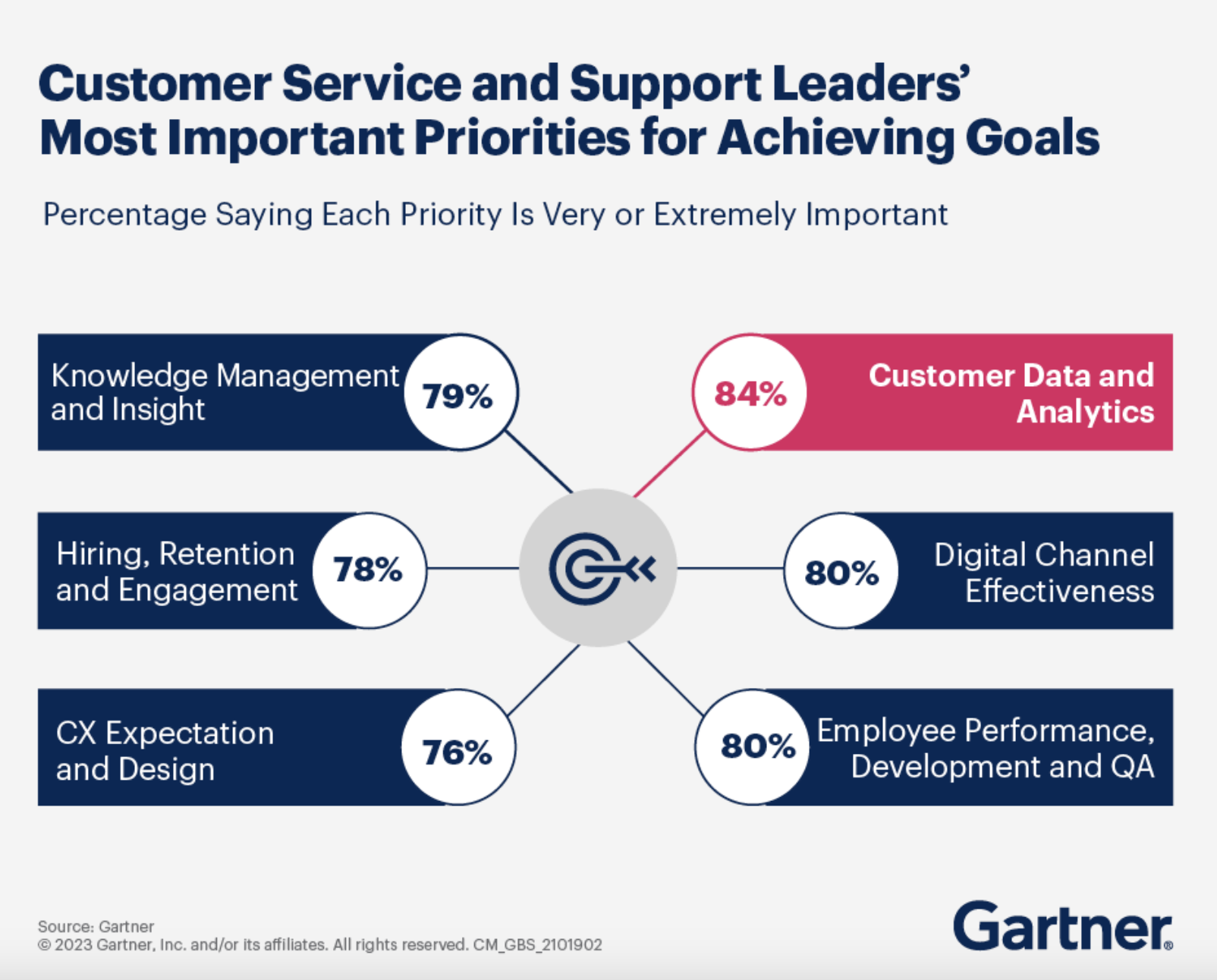
What’s the most critical call center investment?
The most valuable asset in your call center is your people. This sounds like an HR spiel, but your team makes or breaks your call center strategy.
We often talk about people, processes, and technology. But the focus is heavily swayed toward techniques and call center tools because they’re easy to change iteratively.
But people are different. They’re crucial to your call center.
It’s not just the skills they bring to the table. It’s the personalities, the camaraderie, and the willingness to bat for the team.
Even if you’re running a hybrid contact center, where some agents are home-based and some are in the office, they still interact with each other throughout the day. Through internal calls, team collaboration, and hanging out outside of work, call centers quickly adopt a family feel.
Your call center is dependent on the success of your team. The structure is a crucial element here. Think about supervisors, quality assurance managers, and employees skilled in critical areas.
There are several ways to structure a call center. Each of these has its own benefits and success paths.
Let’s look at some best practices when structuring a call center.
How to Structure a Call Center
The starting point of any call center strategy must be your people. And while we don’t like the term hierarchy, a defined structure provides the backbone of any call center.
A typical call center structure looks like this:
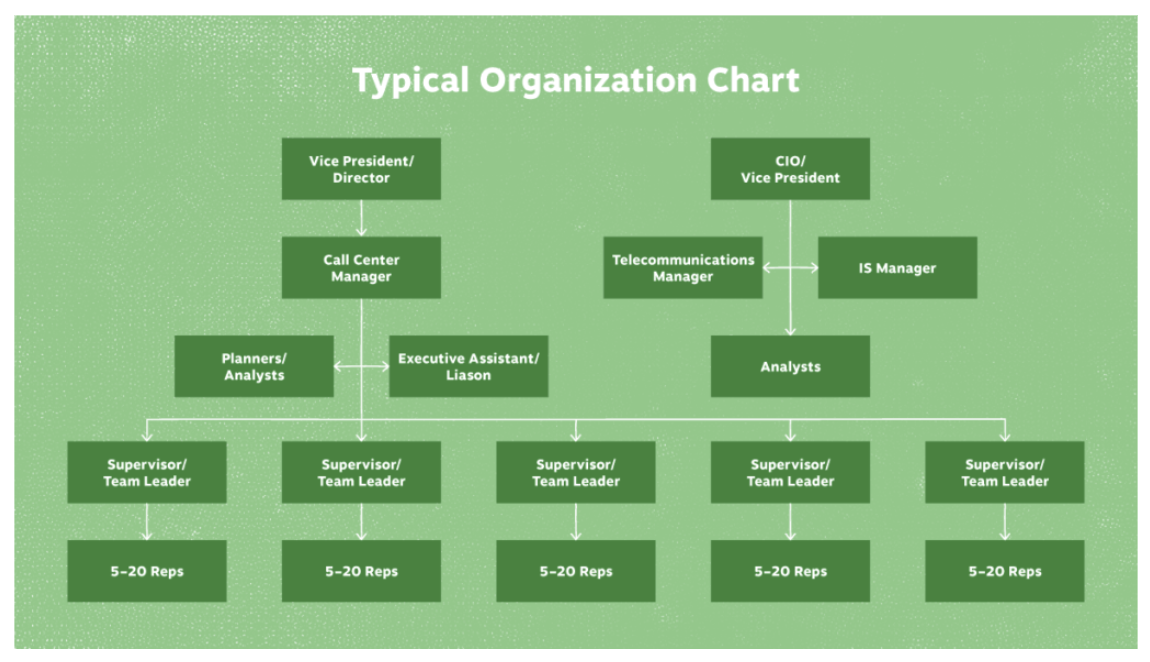
Typical roles in a call center
There are many positions within a call center. Common roles include:
- Call Center Agent – The frontline employees who handle incoming calls, emails, chats, and other customer interactions.
- Team Lead – Provides day-to-day guidance and coaching to a team of agents. Ensures the team adheres to policies and meets performance metrics.
- Call Center Manager – Manages a group of team leads and oversees the operations of a call center department or site.
- VP of Customer Service – A senior executive who is responsible for the strategy and performance of the entire customer service organization.
- Call Center Director – Leads all aspects of call center operations, including workforce management, quality assurance, training, and more. Reports to VP.
- Data Analyst – Analyzes call center data to uncover insights and opportunities for improvement. Provides reports and recommendations.
- QA Analyst – Monitors call center interactions to ensure adherence to policies and standards. Provides feedback and coaching.
- Workforce Management – Forecasts call volumes and schedules agents to meet service levels and ensure adequate staffing.
- Call Center Operations Manager – Responsible for day-to-day oversight of workflows, policies, technologies, and facilities.
- Team Trainer – Develops and delivers training programs to ensure agents are skilled in systems, processes, and policies.
Of course, all these roles come with different titles. For instance, the terms analyst and manager evolved to become Quality Assurance Manager.
Sometimes, senior agents get assigned quality assurance tasks (like listening to recorded calls for training).
As staff progress in their career, their development becomes crucial to the success of your call center. Make sure you factor individual career progression into your call center strategy.
Think about incentives to keep people on the right track daily and at monthly or quarterly intervals.
When you invest in your team member’s success and give them autonomy to do right by the customer, they’ll likely do what’s best for the organization.
You might employ team-level gamification or create a bonus structure based on maintaining constant customer service.
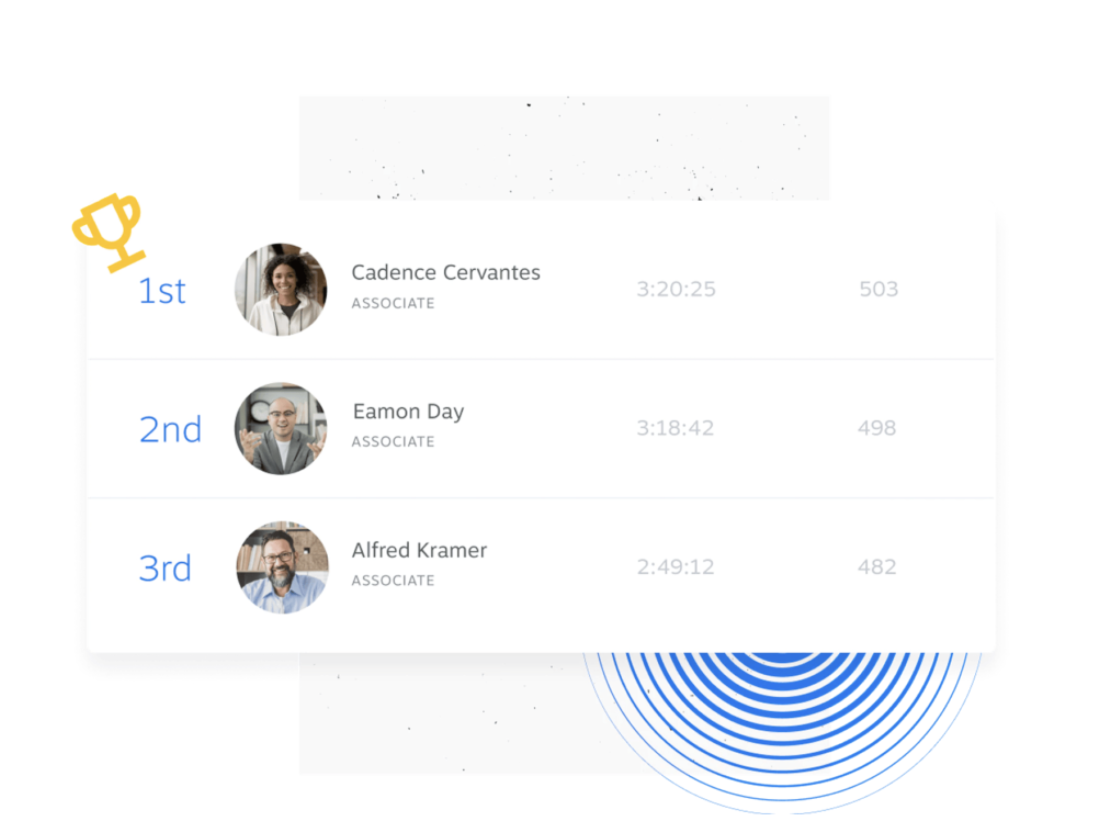
Structuring your call center and phone numbers
How customers reach you is also requisite to any call center strategy.
Your inbound call routing structure plays almost as big a part as your people.
After all, if nobody can reach you, or it’s a tiresome experience, your customers will be upset before you can say, “How can I help?”
When customer problems arise, customers just see a phone number to dial. Their expectation is that they get their question resolved.
How you facilitate these customer issues is up to you. Communication skills aren’t limited to live agents. If you can offer help before someone answers a call, do so.
At the top level, ask the following questions:
- Do our self-service options help the customer or us?
- Could we be using other channels like social media?
- Are our auto attendant options in the right order?
- Is omnichannel a good idea for your customers?
- Can we answer FAQs earlier in the phone system?
All these questions should factor into building inbound call flows for effective call center management.
Your auto attendant gives you the chance to offer options to your customers. But if the most popular choice is at the end of your list, consider moving it to the beginning.
Adding additional contact methods might be the right decision if your customers prefer text-based communications to voice.
Dig In: How Support Teams Use Omnichannel Contact Centers
Call Center Strategy: Goals, Skills & Objectives
Once you’ve established an existing or desired structure, call center development is an ongoing effort that you can manage top-down and bottom-up.
Once again, setting attainable call center metrics and KPIs is crucial before you kick-start your development program.
Split what you measure into call center operations and employee development.
KPIs to scale call center operations
- Service level: What percentage of phone calls are answered within a specified number of seconds?
- Peak hour traffic: Is your call volume rising or falling during your busiest hour?
- First call resolution: How many calls are resolved on the first contact?
- Call abandonment: Are customers hanging up before they get an answer from your agents?
- Average handle time: How long does addressing the customer’s concern take?
- Average speed of answer (ASA): Has your time to answer shrunk or grown compared to last month?
- Customer satisfaction (CSAT): Do you have a pulse on customer engagement from regular customer surveys?
- Interactive Voice Response (IVR): Are callers reaching the right agent without extra transfers?
- Escalation rate: Do you track ticket escalations along with causes and outcomes?
KPIs to drive employee development
- Sales per agent: Is the sales volume growing or staying the same?
- Turnover rate: Do you need to keep hiring and training new call center agents, or are you retaining your workforce?
- Agent utilization rate: How much of the day is dedicated to customer tasks?
- Customer retention rate: Are your customers staying loyal after talking with employees?
- Absenteeism: Do your agents come to work when they’re supposed to?
- Agent performance: Is their performance above par, or are they doing just enough?
- After-call work time (ACW): How long does completing tasks and making notes after each call take?
- Employee engagement: Would your employees recommend working for your company to a friend?
- Quality assurance: Do agents meet internal standards?
Developing a capable and loyal call center team isn’t optional.
Every year, 1.2 million agents leave their contact center jobs, according to a study by Asapp and the University of San Francisco. That’s about $40,000 per head when your agents aren’t happy at work.
It’s safe to say employee satisfaction is a crucial cog in your call center development plan.
Call Center Performance Hinges on Good Training
The development of a call center will always need training. To make call center coaching a successful part of your call center strategy, you must convey why you need training in the first place.
“If an agent has to represent a new brand or product, they would need to get trained in the culture of the brand or specifics of the product.
Customer service teams also often perform different types of services (e.g., customer care, tech support or help desk, sales, marketing, market research, collections) and thus need training in those as needed.”
Sebastian Menutti
Your training could be formal, informal, accredited, or in-house. Or, in most cases, a mix of these. Whichever options you choose, include these six items:
1) Deep-dive on company products
Give agents time to learn the products they sell and support. This is important not only for the customer to be dealt with by someone who knows product-speak but also to ensure your agent can deliver confidently.
Customers know when they’re talking to an expert. If an agent isn’t comfortable talking technical or hasn’t actually used your product, they lack authority and lose the customer’s trust.
2) Call control best practices
Like product training, call control is vital for any customer service agent. Even experienced agents must receive training to use your call center software effectively.
Training on one solution isn’t catch-all. Call center technology is constantly evolving.
Make sure every agent is up to speed with call management best practices. Describe scenarios for a cold transfer vs. a warm transfer. And even how to set up a three-way call.
Otherwise, you risk transferring a customer to the wrong team or disconnecting the line altogether.
3) Listening to recorded calls
Call recording is an often-underestimated technology included with all good call center platforms.
One of the best ways to gauge where employees need training is by listening to actual customer calls.
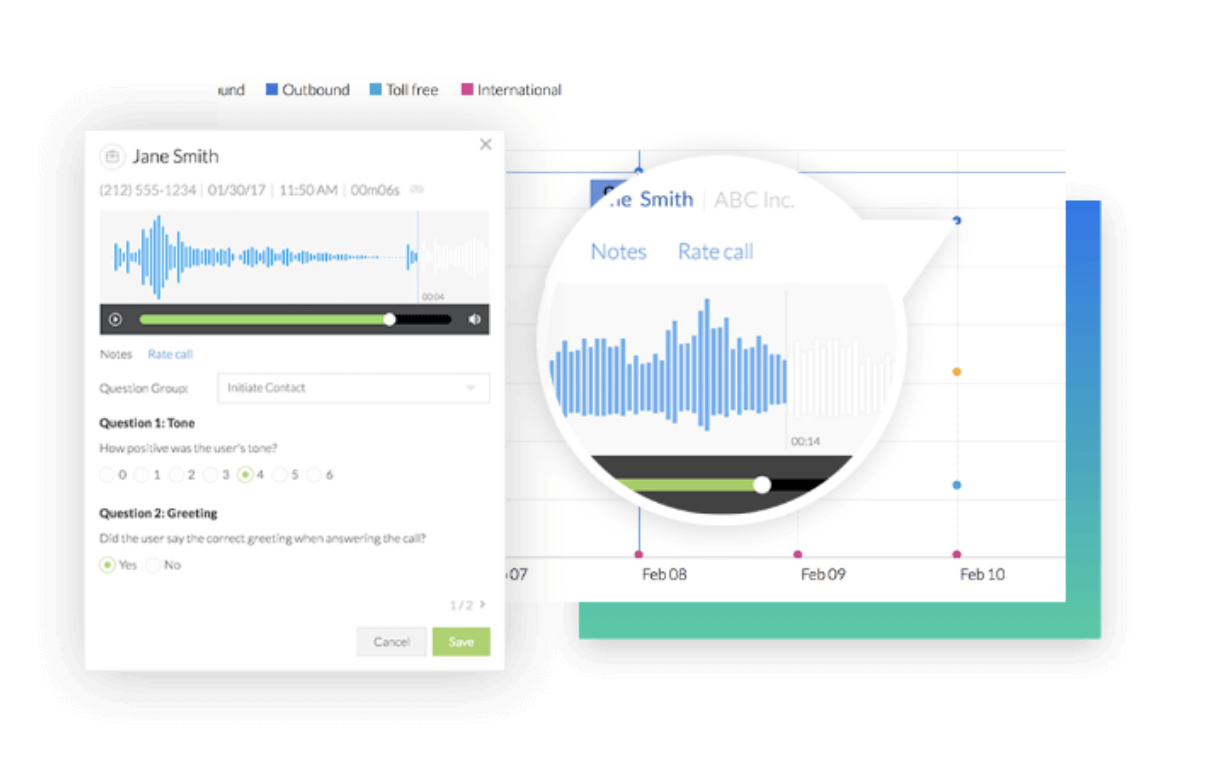
Call center agent areas for improvement
- Excessive silence and “umms”
- Gap fillers where they don’t know the solution
- Putting the customer on hold to search for documentation
- Giving customers incorrect answers
- Asking customers for repetitive information
When you spot an area for improvement, document it in a personal development plan. This plan should include all customer service skills you identify as crucial to the ongoing development of your employees and your call center.
Remember to lavish praise for what agents did well. You want your team members to be eager to share their customer service interactions. It creates a more candid dialogue between team leaders and their reps.
4) Live monitoring
Call monitoring, once considered taboo, is common in many call centers. You can play a message so callers know their call might be recorded, so they’re not surprised.
During the call, offer coaching to the agent to correct something they’ve said. Or you can provide advice if they’re stuck.
In these scenarios, you can even take over the call. This ensures you stop the problem from escalating to an unwanted outcome.
Be sure that you understand what the customer needs before jumping in. Taking over that call could be a net negative if they want a quick resolution and your agents are halfway there.
5) Formal escalation procedures
You can’t monitor every call in real time. So, having documented and updated formal escalation processes is prudent.
When a customer escalates, you need your agents to calmly explain the process to the customer and transfer them to the right person.
Different cases may need referring to senior team members. For example, only the accounts team may be able to resolve a billing issue. Or a technical question may need someone with specialized product training.
Make the process as easy as possible for your agents.
Call center escalation training
- Recognize when the call needs escalating
- Know the best person to handle the call
- Explain to the customer what happens next
- Transfer the call reliably
- Log appropriate notes on your CRM
6) Up-to-date documentation
Part and parcel of a smooth escalation procedure is keeping documentation up to date.
In any of the examples above, the agents must be confident of the information they provide customers.
It’s counterproductive to ease a caller’s concern only to transfer them to the wrong team. Assign the responsibility of relevant documentation to an escalation owner per department.
Check with team members each month to refresh documentation and routing.
When you make changes, keep a log with the date, the person who made the change, and why. This helps your agents track changes and match your messaging.
Call Center Performance Relies on Great Technology
It’s no use putting the above training into practice if your technology doesn’t live up to your standards.
You can have the best agents in the world, adhering to world-class processes. But, if your technology fails you, it’s all for nothing.
Here are some areas to look out for that suggest your technology is holding you back.
Crackly or dropped calls
If callers keep hanging up mid-sentence, they’re likely not hanging up.
Sure, some might be frustrated, so they hang up and call again, hoping to get a different agent. But, if you sense it’s not that, there’s likely an issue with your telephony equipment.
The same applies to distorted lines and periods of silence when you thought a caller was speaking.
While you can’t do anything about a caller’s poor phone signal or bad phone line, you can ensure your business has a business-grade VoIP phone system.
High latency when accessing customer info
When customers call in, they give you their account number and password.
They expect you to immediately have all their information to hand.
If you have to say, “Sorry, I’m waiting for my system to load,” you’re immediately on the back foot as an agent.
Make sure you review both your internet connectivity and your internal networking often. In most cases, if you raise an issue with your internet service provider, they will ask you to conduct a thorough check for network jitter.
Doing these in tandem is not only the best practice for ensuring consistent call center performance, but it will also save you time when troubleshooting.
Siloed customer interactions
If a customer calls in to follow up on an email or web chat, the last thing they want is to be transferred to another agent.
This means listening to your hold music again and explaining why they’re calling from the beginning.
A better way to serve customers with these queries is to unify the customer experience.
If you have other channels that customers can reach you on, making them available to all your agents makes sense. Even if you don’t want all agents managing all channels, as a minimum, give them access to view what was said on that email or web chat.
This is called omnichannel. It might be a step too far if you’re in the early stages of planning your call center strategy. But, if this is common, it’s the best solution for your customers.
The next time a customer calls in to discuss something they raised on a different channel, empower your agents with all the content and context they need to help that customer out there and then.
Ways to Improve Your Call Center Strategy
1) Invest in employee engagement
The resounding theme here is to put your employees at the forefront of your call center strategy.
The logic is simple, and you can apply it to almost any routine task.
Think about it. If you enjoy your work, you’re more likely to focus and drive better results.
It could be surfing, soccer, swimming, or sewing. Regardless of the task, agent performance will skyrocket when agents are engaged in what they’re doing.
Make sure your call center onboarding and training plans focus on the business and the person by asking your agents what they need from you.
2) Act on customer feedback
It’s not just employees you should ask for feedback. The voice of the customer is the most valuable data that needs to be considered.
It’s one thing to create a training plan. It’s another to tailor it to what your customers need.
Conduct regular CSAT, NPS, and outbound call surveys to discover where your customers feel a gap in your call center or the business itself.
When you have that feedback, book time to follow up on what you’ve learned. Information that gets stored away for a rainy day never gets used.
3) Perform a SWOT analysis
You can conduct a SWOT analysis using the output of your CSAT surveys.
SWOT stands for Strengths, Weaknesses, Opportunities, and Threats.
A typical SWOT consists of four quadrants. The upper half is focused on the internal functions within your company. The bottom half involves external activities you don’t necessarily have influence over.
Call center SWOT analysis example:
| Strengths
A large, growing team |
Weaknesses Handle time continues to rise The knowledge base team is overwhelmed Had to defer FCR training Call center agent progression plan |
| Opportunities Train senior staff to become coaches Rival shut down the inbound call center Workforce training grant awarded |
Threats Competitors gaining market share Phone system setup slows down onboarding Competitors using AI call center technology |
Examine the strengths, weaknesses, opportunities, and threats in each square. Conducting this SWOT exercise quarterly across every department, including sales, customer experience, and engineering, is a good idea. There will likely be several emerging issues that you can solve immediately.
Once you have identified them, you have the basis for an improvement plan in your call center strategy — and to improve business outcomes.
4) Identify and solve chronic issues
Another key element in improving your call center is the simple questions people ask most often.
First, you need a method of tracking your top call drivers. Otherwise, you’ll need your agents to track common questions individually. While this sounds like an easy remedy, it’s open to incorrect customer data if agents miss customer calls.
If you’re not already using wrap-up or disposition codes, you can configure these based on your business type. For example, sales teams can use Completed Sale. If you have a technical support team, they can use Issue Resolved, Pending Resolved, or Escalated.
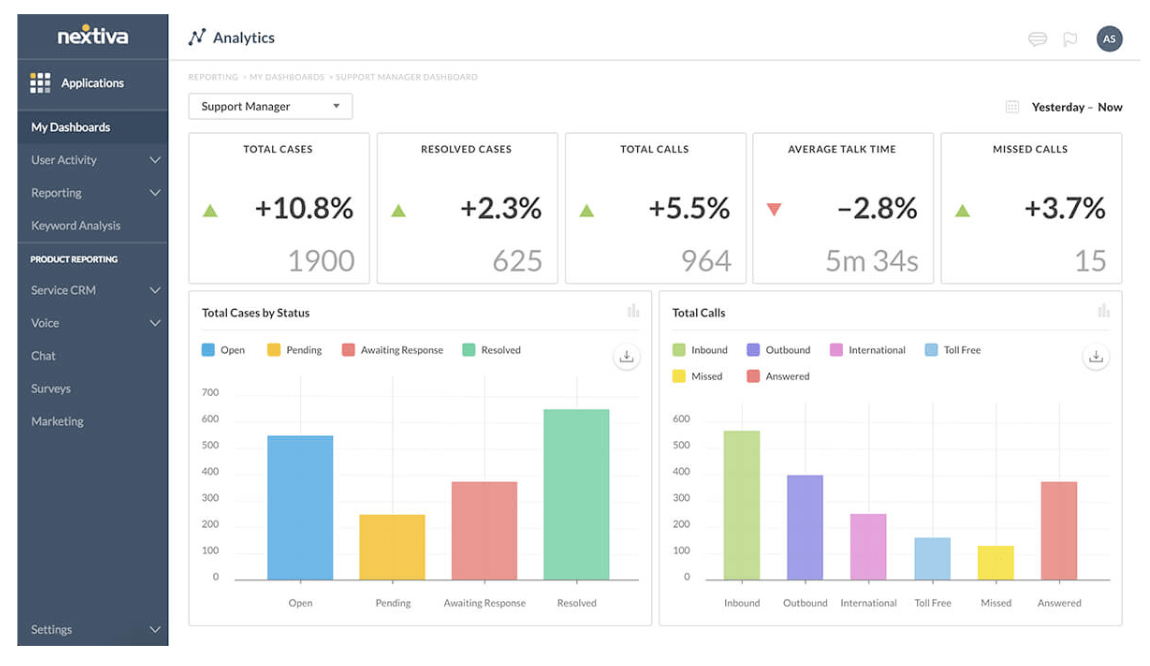
5) Use call scripts as a guide
The best customer service teams are the ones that render the best customer experience. And the best customer experience makes them feel valued and confident in your product or service.
Long gone are the days of linear call flows. But the use of scripts won’t disappear entirely.
Instead of reading word-for-word from a script, review the most critical steps and create a process chart. Even a simple outline in bullet points can work well.
So, rather than 100 words to move to the next step, ask specific questions and wait for the customer to respond. After all, what happens if their answer isn’t in your script? Probably an avoidable escalation.
As a call center leader, move from scripts to a human-first customer experience. It’ll set your team apart from the rest.
6) Give information to customers on hold
During your call queues, what do you offer to your customers? Some organizations don’t offer anything at all. This means customers wait on hold listening to elevator music.
Your call center software should let you easily add messages to callers when on hold or before reaching your call distribution system.
On-hold message opportunities:
- Inform callers of the expected wait time
- Offer a call back when an agent is free
- Present self-service options like opening hours
- Route to overflow answering service
- Give the option to leave a message
- Suggest using chatbots on your website
Next-Level Customer Service Can Now Be Yours
Atlas had the world on his shoulders. You have a call center.
You’re not alone. This guide outlines the top areas to include in your call center strategy. Only you can make it fit your organization.
If there’s one takeaway, begin with a vision a few years out and work backward. What steps are necessary to get there? Fill those in, and you’ll be in a great spot to lead your contact center.
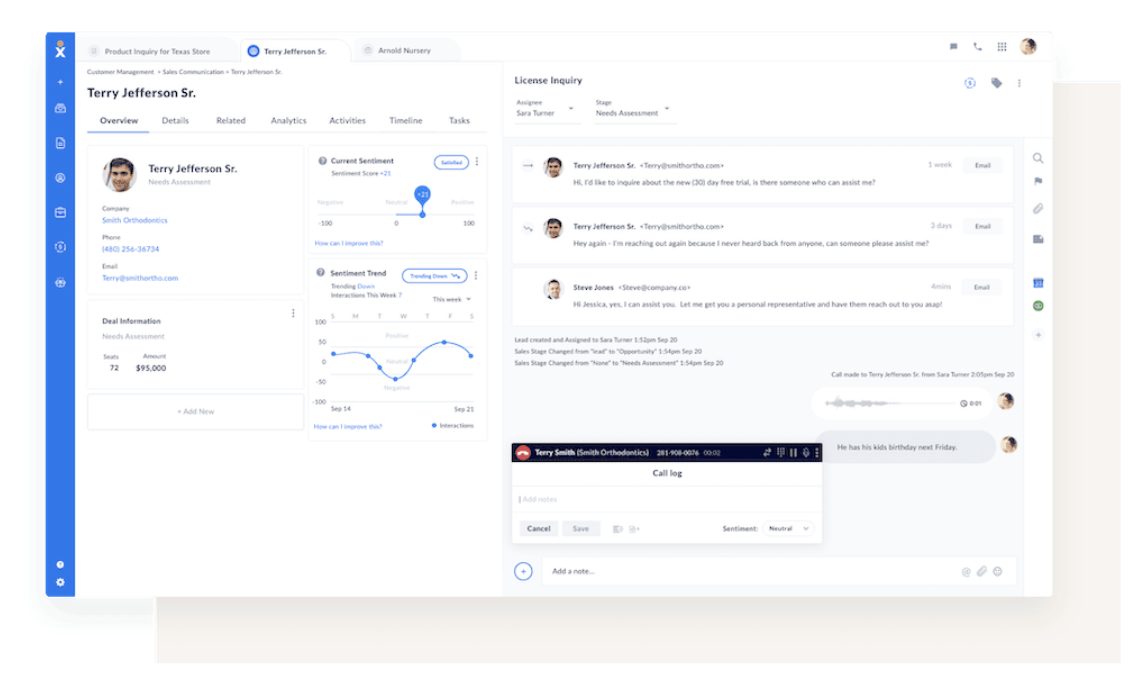
Nextiva provides robust call center solutions designed to drive effectiveness and improvements for the future of your call center.
As your team scales and technology progresses, you benefit from a future-proof contact center and an evolving call center strategy.
The best part is you won’t have to figure it out by yourself. We have the expertise to help you shine for your customers and the C-suite.



